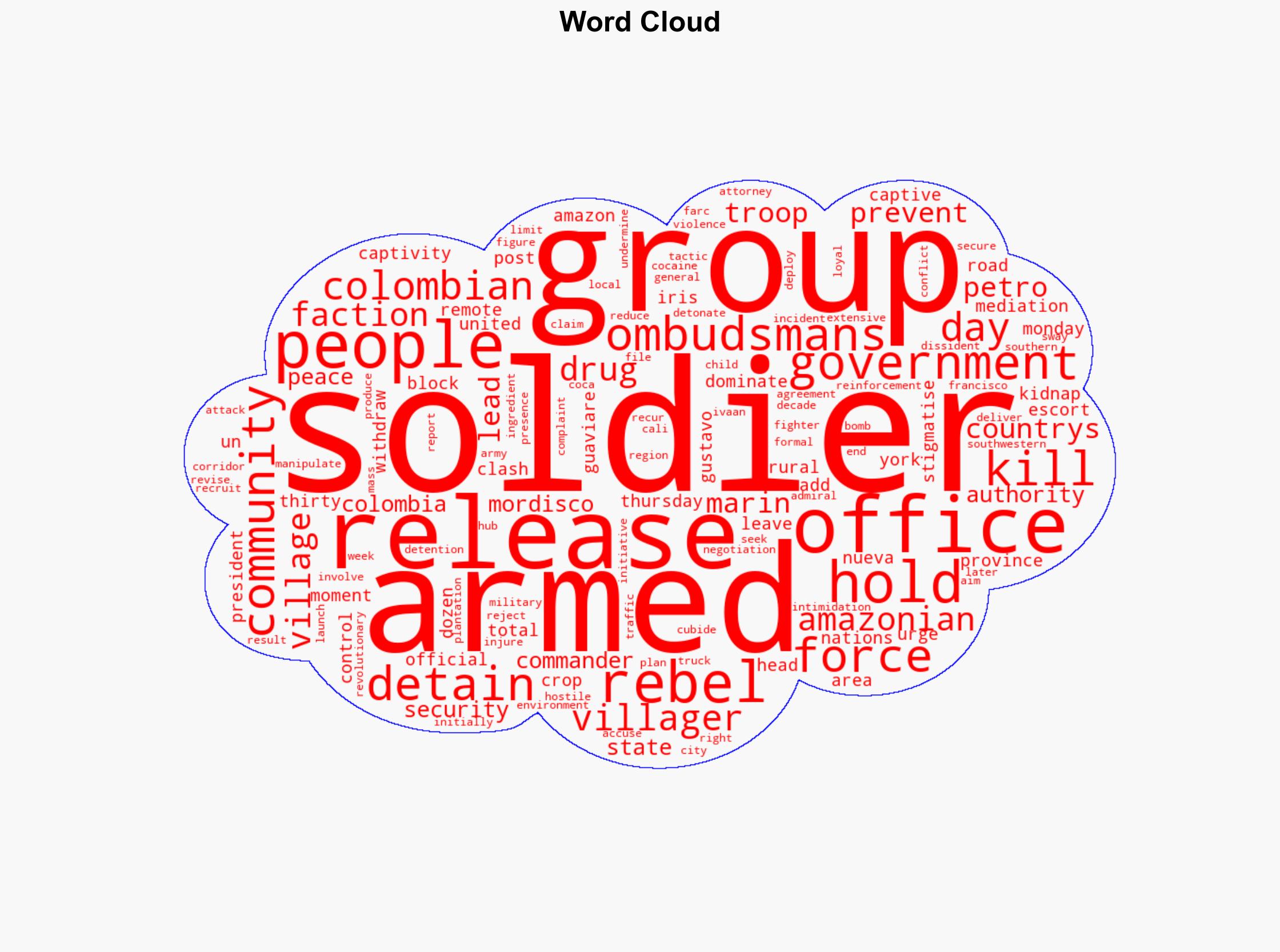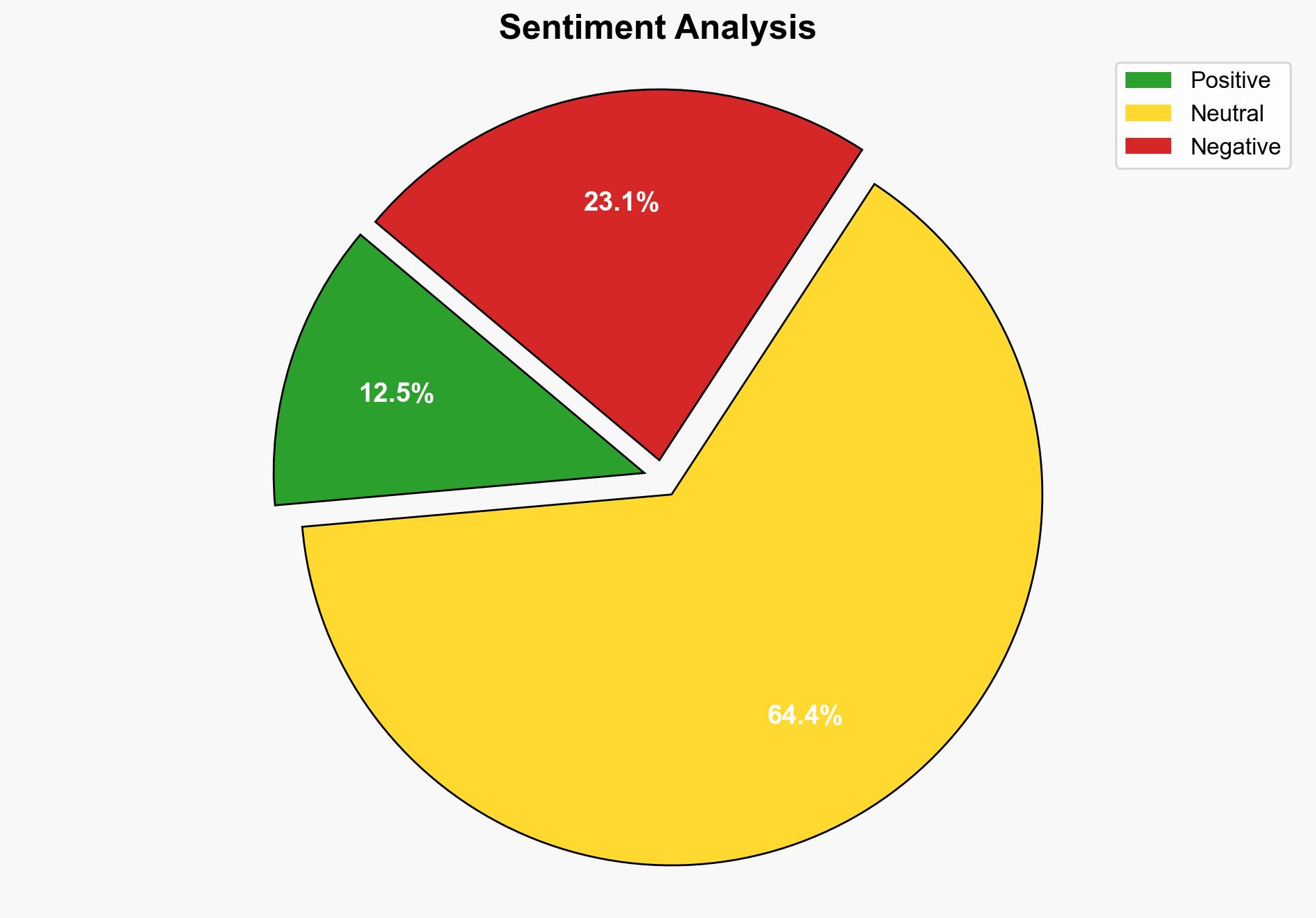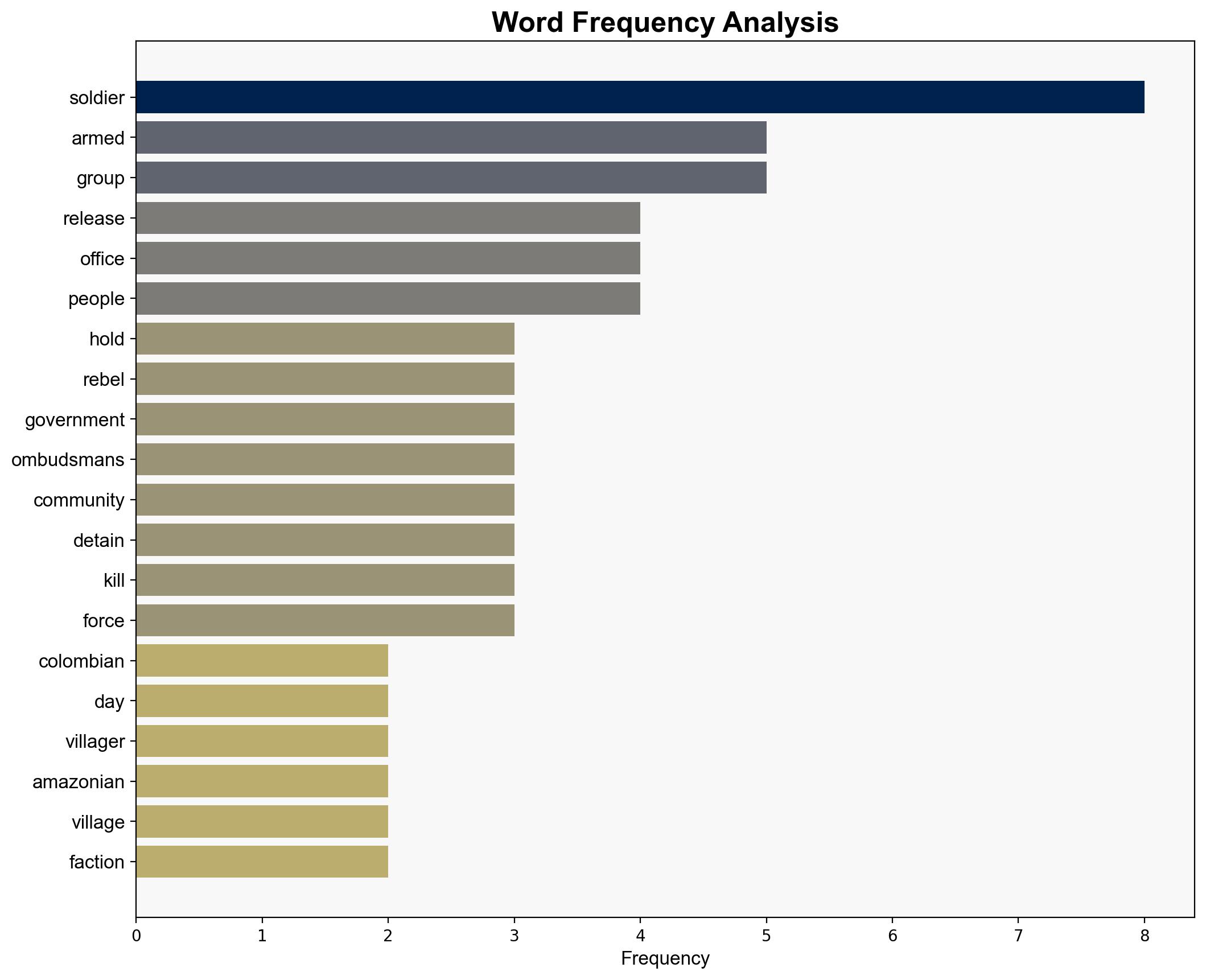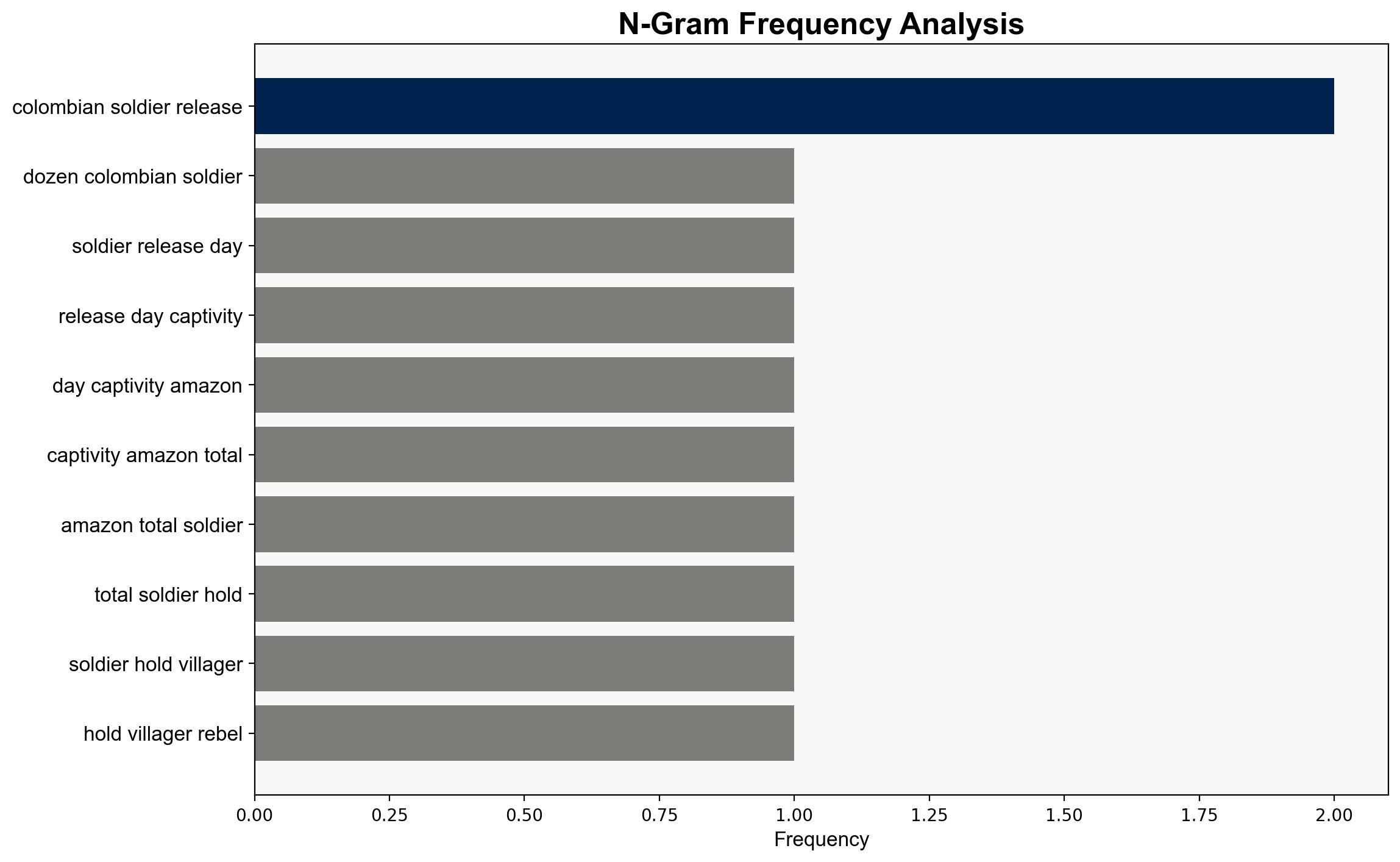Colombian soldiers freed after three-day captivity in Amazon – Al Jazeera English
Published on: 2025-08-29
Intelligence Report: Colombian soldiers freed after three-day captivity in Amazon – Al Jazeera English
1. BLUF (Bottom Line Up Front)
The most supported hypothesis is that the Colombian soldiers’ detention was a strategic move by dissident groups to assert control and influence in the region, leveraging local populations against government forces. This hypothesis is supported by the involvement of the United Nations in mediation and the historical context of armed groups in the area. Confidence Level: Moderate. Recommended action includes strengthening community relations and intelligence operations to prevent future incidents.
2. Competing Hypotheses
1. **Hypothesis A**: The soldiers were detained as a tactical maneuver by dissident groups to demonstrate power and disrupt government operations in the Amazon region.
– **Supporting Evidence**: The involvement of the United Nations in mediation, the historical presence of armed groups, and the strategic location of the Amazonian corridor for drug trafficking.
2. **Hypothesis B**: The detention was primarily a spontaneous reaction by local villagers, manipulated by rebel factions, to protest military presence and actions in their community.
– **Supporting Evidence**: Initial reports of villagers blocking roads and the revised figures indicating mass detention suggest local involvement.
Using ACH 2.0, Hypothesis A is better supported due to the structured involvement of international mediators and the strategic interests of dissident groups in maintaining influence over drug trafficking routes.
3. Key Assumptions and Red Flags
– **Assumptions**:
– Hypothesis A assumes that dissident groups have the capability and intent to coordinate such detentions.
– Hypothesis B assumes that local villagers have significant autonomy and influence over military actions.
– **Red Flags**:
– The revised figures of detained soldiers suggest initial misinformation or miscommunication.
– Potential bias in reporting due to the complex socio-political dynamics in the region.
4. Implications and Strategic Risks
– **Patterns**: The incident highlights ongoing instability in regions with limited government presence and the potential for similar future detentions.
– **Cascading Threats**: Continued detentions could escalate into broader conflicts, undermining peace initiatives.
– **Geopolitical Dimensions**: The involvement of international bodies like the UN indicates the global significance of regional stability.
5. Recommendations and Outlook
- Enhance intelligence gathering and community engagement to preempt similar incidents.
- Strengthen diplomatic efforts with international bodies to support peace initiatives.
- Scenario Projections:
– **Best Case**: Successful peace negotiations reduce armed group influence.
– **Worst Case**: Escalation of conflict leading to increased regional instability.
– **Most Likely**: Continued sporadic detentions and conflicts requiring ongoing mediation.
6. Key Individuals and Entities
– Iván Mordisco, commander of the Revolutionary Armed Forces of Colombia (FARC) dissident group.
– Iris Marin, head of the Colombian Ombudsman’s Office.
– Francisco Cubide, military commander.
7. Thematic Tags
national security threats, regional stability, armed conflict, peace negotiations




